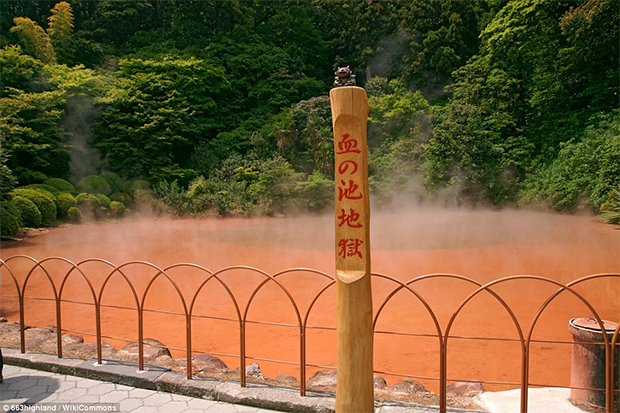|
From countless religions to cult shows like Buffy the Vampire Slayer,
the idea of reaching hell through a portal on Earth has been around for
thousands of years.
Almost every faith features the concept of an underworld, where the
souls of sinners are banished.
Some believe that the afterlife is a spiritual place reached after death
– but others have thought that hell can be reached more directly through
an entrance on Earth.
Atlas Obscura collected a series of these purported gates to hell – and
some of their locations are somewhat surprising.
There’s a purported gate to hell in the otherwise pleasant town of
Hellam Township in Pennsylvania, but the traditional hell of Christian
scripture can apparently be reached through places in Greece, Ireland
and Rome.
Or you could travel to a Mayan cave, Japanese swamp or a fiery pit of
lava in Iceland.
Regardless of whether you believe the legends, take a look at some of
the stunning locations around the planet that people thought (and some
still do) lead straight to hell…
|
|
THE SEVEN GATES OF HELL IN HELLAM TOWNSHIP,
PENNSYLVANIA:
The gateways to Hell are rumored to exist in a forest off Trout Run Road
near this friendly town. One myth ties the entrance to hell to an insane
asylum that burned to the ground in the 19th century while another
claims a local doctor designed a series of gates on his land. The
stories say that those who pass through all seven gates end up in the
underworld, however only the first one is apparently visible during the
day. |
|
 |
|
HEKLA, ICELAND:
A stratovolcano in the southern mountains of Iceland has long been
linked to the hellfire in Christian scripture. Cictercian monks in the
Middles Ages told tales of 'Hekla Fell' and local folklore still says
witches gather around the volcano's peak at Easter |
|

|
|
CHINOKIE JIGOKU IN BEPPU CITY, JAPAN:
A portal to hell reportedly exists in a suitably hell-ish pool of red
slime (due to natural iron oxide deposits) in the Far East. Beppu City
has nine hot springs, each a different color, but this one is called
Chinoike Jigoku, or the 'Bloody Hell Pond', and is guarded by sculpted
demons . In the past, the pond - where water reached 78 degrees Celsius
- was sometimes used to torture prisoners before they were boiled alive |
|

|
|
CAVE OF THE SIBYL IN NAPLES, ITALY:
This cave was described in Virgil's epic poem The Aeneid more than 2000
years ago as one with a hundred entrances that led deep beneath the
Earth and even reached the underworld. In 1932, the reknowned
archaeologist Amedeo Maiuri discovered the hell portal Virgil described |
|
 |
|
PLUTO'S GATE IN DENIZLI PROVINCE, TURKEY:
The ancient Greek site known as Pluto's Gate or the 'Ploutonion' has
recently been found in Turkey after an archaeological dig revealed the
remains of an ancient temple on a thermal spring. This hell gate also
has toxic fumes that come from the tunnels beneath which Greek
philosopher Strabo said meant 'any animal that passes inside meets
instant death'
|
|
 |
|
LACUS CURTIUS IN ROME, ITALY:
In the heart of the Roman Forum is a small stone well that was once
thought to be an entrance to the underworld. The name Lacus Curtius or
the 'Lake of Curtius' comes from a Roman legend that tells of an oracle
who said Rome would fall unless the city made the ultimate sacrifice -
and centurion Marcus Curtius gave his life to save Rome by riding his
horse into a pit that opened in the center of the Forum
|
|
 |
|
FENGDU CITY OF GHOSTS IN CHONGQING, CHINA:
This 2,000-year-old settlement is located on Ming Hill and is tied to
Naraka, the underworld of Chinese mythology. The city is filled with
statues of ghosts, demons and the punishments that await sinners in the
afterlife and 'The Ghost King' - a giant sculpture carved into a rock
face - looks down at the city
|
|
 |